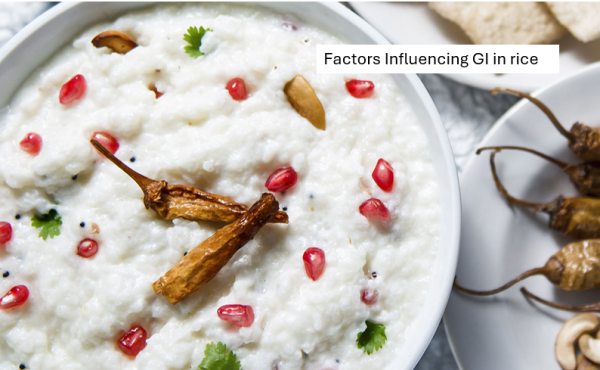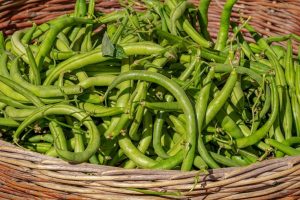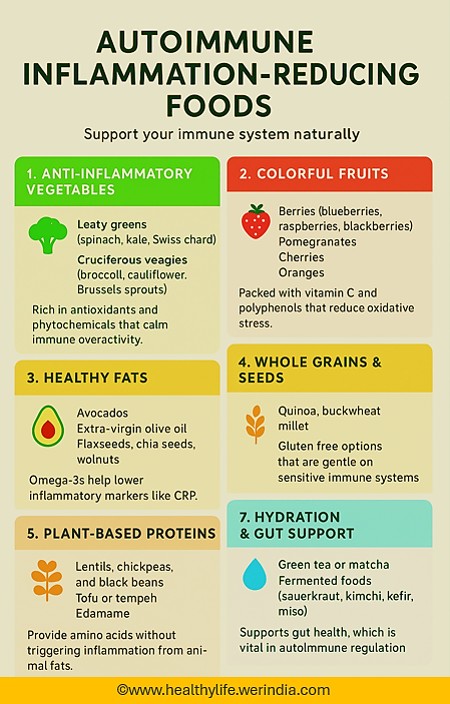
Key Factors Influencing GI
The following are four distinct factors that influence GI of rice.
Rice variety:
- Short-grain white rice (e.g., sticky or sushi rice) has a higher GI.
- Basmati or long-grain white rice has a moderate GI (50–65).
- Brown rice or black rice has a lower GI (50–55).
Cooking method:
- Overcooked rice has a higher GI than rice cooked at the right consistency.
- Adding oils or lemon juice can further reduce the GI.
Portion and meal composition: Pairing rice with fiber, protein, or fats can slow digestion and reduce the overall glycemic response of the meal.
Practical tips:
- Use long-grain or basmati rice for a naturally lower GI.
- Cook rice ahead of time, refrigerate it for at least 12 hours, and reheat it before eating.
- Pair rice with vegetables, protein, or healthy fats to further lower the glycemic impact.
Practical ways to maximize health benefits:
- Portion control: Use refrigerated rice in moderate amounts to balance blood sugar and calorie intake.
- Pair with protein and healthy fats: Add chicken, fish, tofu, avocado, or olive oil for a balanced meal.
- Include high-fiber foods: Combine with veggies or legumes to enhance digestion and nutrient absorption.
- Cool safely: Refrigerate cooked rice quickly to avoid bacterial contamination.
Image credit: By Sudharshan Shanmugasundaram – Own work, CC BY-SA 4.0, https://commons.wikimedia.org/w/index.php?curid=40676721
Author: Sumana Rao | Posted on: January 27, 2025
« Previous Article
Next Article »
« Glycemic Index Of Cooked Rice Varieties Low-Glycemic Index Strategies With Rice Eating »
« Glycemic Index Of Cooked Rice Varieties Low-Glycemic Index Strategies With Rice Eating »






















Write a comment